I. Introduction
Based on a recommendation from followers we decided to make our latest blog post accompanying our latest product launch a video blog, which is located here: I also decided to do an accompanying written blog post for those of you who prefer written content over video content. The video blog post is a bit over 30 minutes and also has an accompanying installation video a bit over 20 mins, but it should only take you about 15 minutes to read this written version. There is also a companion product launching at the same time, our new gauge pods for housing standard size aftermarket gauges and/or fan controllers you might want to install at the same time as our dual electric fan kit, details here:
II. Blog Contents and Executive Summary
A. Factory Cooling Fan Negatives
1. Insufficient idle/low speed airflow
2. Clutch wear leading to insufficient idle airflow
3. Fan embrittlement, cracking, explosion, and collateral damage
4. Service access limitations
B. Common Alternatives to factory cooling fan system
1. Heavy duty fan clutches
2. Explorer Fan and clutch
3. Aftermarket Electrics
4. Ford Fusion/other oem adaptations
C. Top Ten Benefits of a dual electric system
D. The engineering in the Extinct dual electric kit
1. Background/inspiration
2. Dual Electric Cooling fan selection/recommendation
3. Plug/Play Fusepanel/wiring harness description
4. Mounting bracket description
The key topics we cover in the video and written blogs are:
The factory engine cooling fan system has a number of negative characteristics as outlined above and most if not all D2 owners will experience all of these at some point in time and eventually be forced to replace their original equipment. Given the age of the vehicles it would be an excellent idea to do that before the system causes a catastrophic overheat or explodes with the resulting collateral damage underhood.
Most of the common alternatives are all better than the factory system, although the engine driven alternatives that solve most of the oem negatives come with their own downsides like increased noise or decreased fuel economy. The other dual electric alternatives also have their own negatives including requiring significant engineering, wiring, and fabrication to install along with sub-optimal designs and outcomes. Our new kit overcomes all of the negatives from both alternatives.
Finally we go through the details of engineering our new kit, the important takeaways are an increase in airflow of almost 100% over all the other alternatives and a plug and play system that is easily installed with minimal installation work needed.
III. Factory Engine Cooling Fan System Negative Characteristics
There are numerous negative characteristics to the factory engine cooling fan system and most if not all D2 owners will get to experience all of these at some point in their ownership and be forced to replace their original equipment. The first issue most owners notice is that during the hottest summer months when using the AC at its maximum the engine temperature tends to creep up when idling for long periods, sometimes to an undesirable level. Other owners even with the inline thermostat modification might notice their trucks temperature climbing when out on the trail climbing long steep grades at low speed.

The basic reason for this is that the factory system just does not move enough air at low engine speeds. The D2 Thor/Bosch engine idles at about 700 rpm which is not enough to move enough air to keep the engine cool in the hottest summer temperatures if idling for a long period of time. When climbing steep trails off-road the engine may be working hard but in low range rarely does the vehicle speed exceed single digits nor the engine speed exceed 1500 rpm, the combination again means not enough air is flowing through the radiator to keep the engine cool.
Both of the above conditions can be exacerbated with age as normal fan clutch wear and deterioration can mean less than adequate fan engagement and speed to keep the engine cool even during normal operation during the cooler parts of the year.
To make both of these situations even worse, the factory D2 engine cooling fan is manufactured from a plastic that experiences significant embrittlement over time due to the normal thermal cycles experienced with the eventual result being cracking of the fan blades and eventually explosion of the fan resulting in considerable collateral damage including destruction of the fan shroud, transmission cooler lines, oil cooler lines, radiator hoses, power steering hoses, and air intake hose.
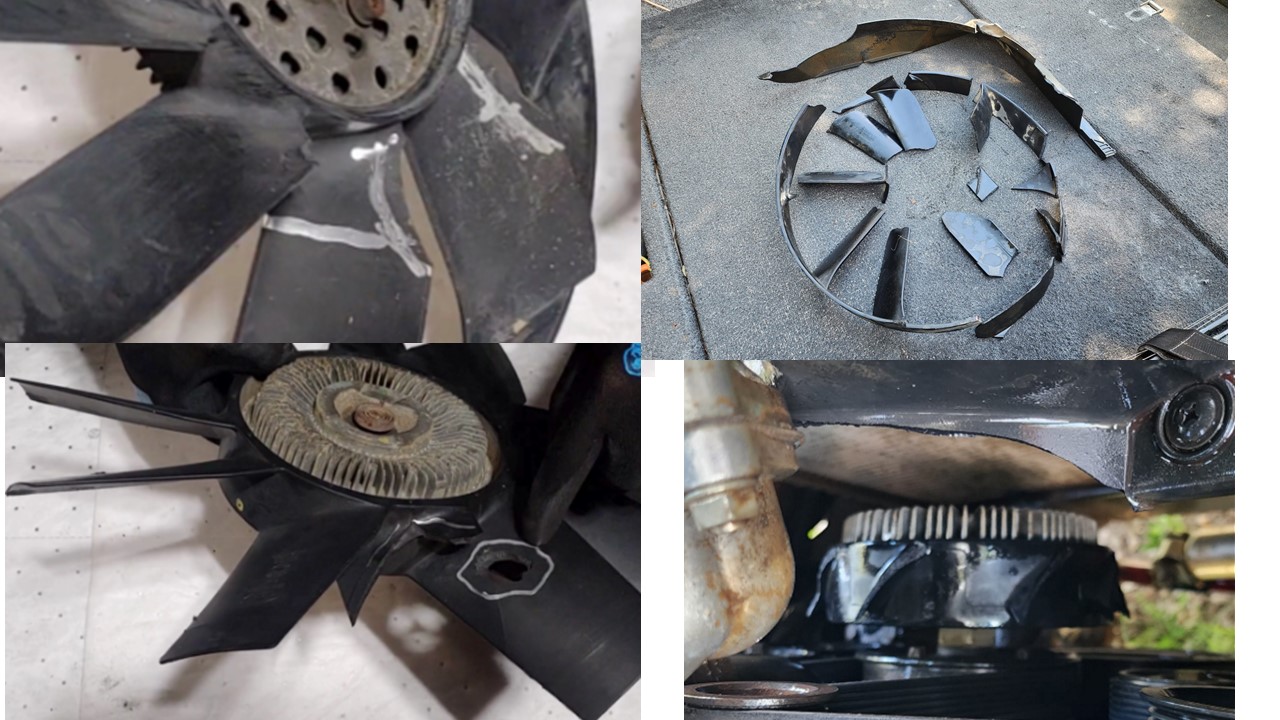
Usually this occurs during a high speed engine event, for example entering a freeway from an on-ramp where the engine speed might go close to the maximum. The crack in the engine fan results in an imbalance and the resulting high speed harmonics result in it coming apart at the worst possible time.
The final negative characteristic worth discussing is the service access to the front of the engine for maintenance purposes. Replacement of any of the idler pulleys or accessories such as the alternator, water pump or power steering pump requires removal of the factory cooling fan as a first step and if the vehicle has been operated in climates where road salt is used it is not uncommon for the clutch fan nut to have rusted on to the water pump hub resulting in the need to literally cut the pump shaft to remove the fan.
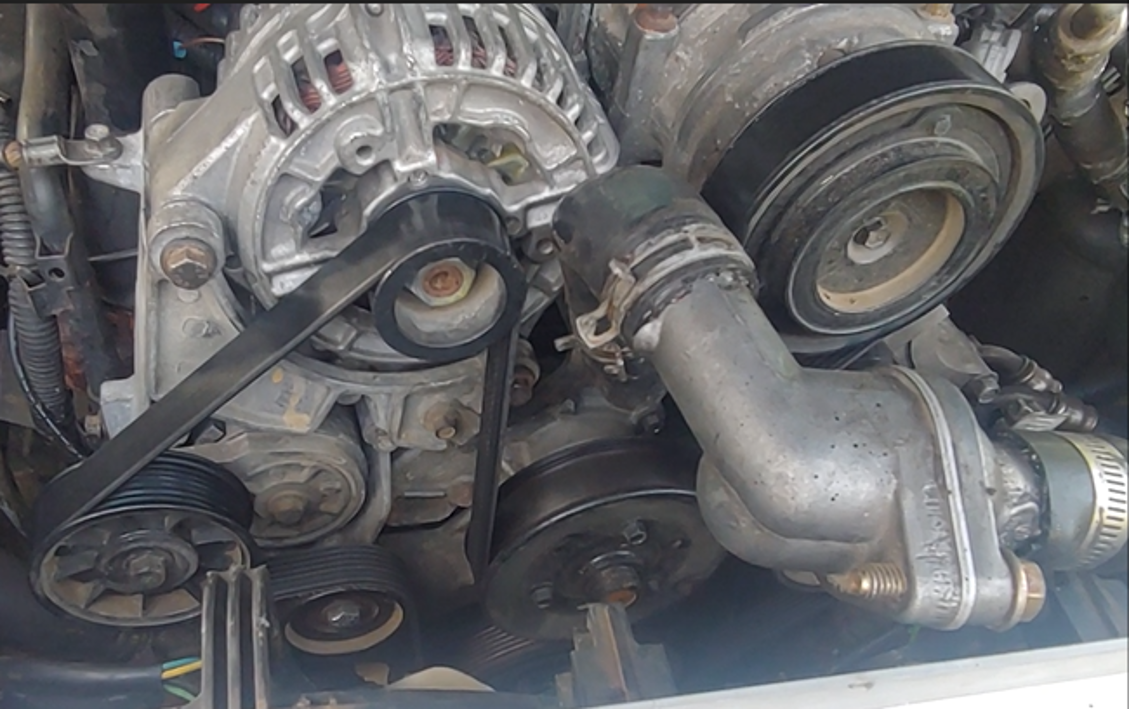
Unfortunately just replacing the oem fan with a new system will not resolve all of these issues, hence the numerous alternatives D2 owners have explored over the years.
IV. Alternatives
One of the first alternatives owners began using is a heavier duty fan clutch. Many fan clutch manufacturers make fan clutches with more aggressive engagement profiles, causing the fan clutch to engage sooner as the engine warms up and release less as vehicle speed increases. Unfortunately this more aggressive fan clutch engagement comes with the downsides of noisier operation and lower fuel economy as the fan remains engaged even when not really needed.
A popular variation of this heavier duty fan clutch system is the fan and clutch from a early-90’s (1991-1994 4.0 V6) Ford Explorer.
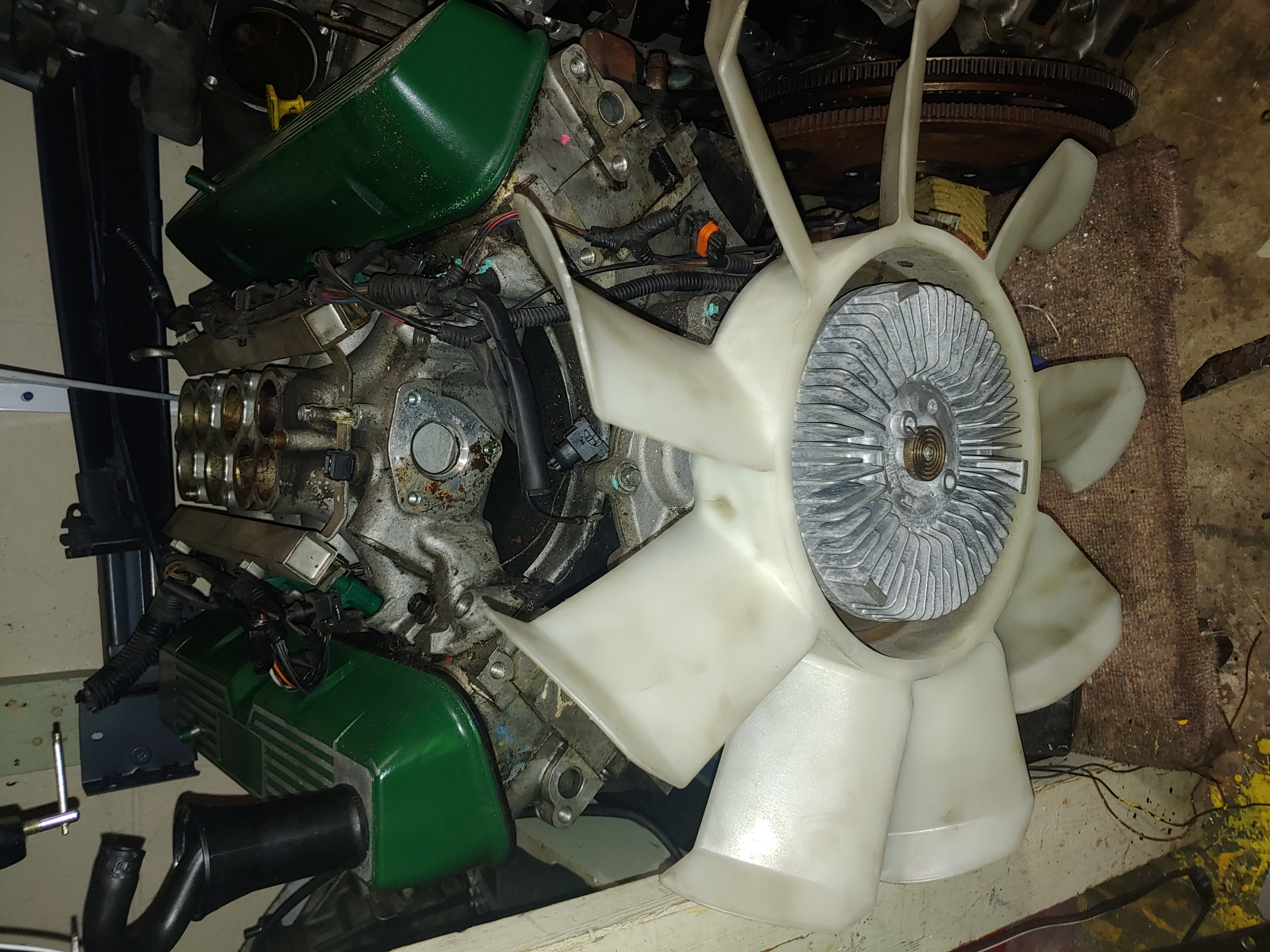
It has the benefits of eliminating the factory fans brittle explosion occurrence (it is made of a more flexible and durable plastic, although I am sure eventually it would experience the same embrittlement just likely not as soon as the LR plastic) and a more aggressive fan clutch resulting in more airflow at idle and low speed than the factory fan. In our testing the factory fan in good condition moves air at approximately 18mph whereas the Ford Explorer fan combination moves air at closer to 20 mph, a 10% improvement. However this fan does increase the ambient noise during acceleration, approximately 4x as much noise level as the factory fan. This is mostly noticeable at acceleration from a standing start and diminishes to an extent at highway speeds as the overall wind, drivetrain, and tire noise begins to drown out the fan noise. However the fan is still engaged more aggressively and this does result in some loss of fuel economy, our testing shows it to be worth approximately 1 mpg at 75mph operation.
Of course automotive enthusiast have been installing electric radiator fans for decades and D2 owners are no exception. Most have gravitated toward dual electrics over single electrics because the dual electric configuration covers more of the radiator surface area on a rectangular shaped radiator like we have on the D2.
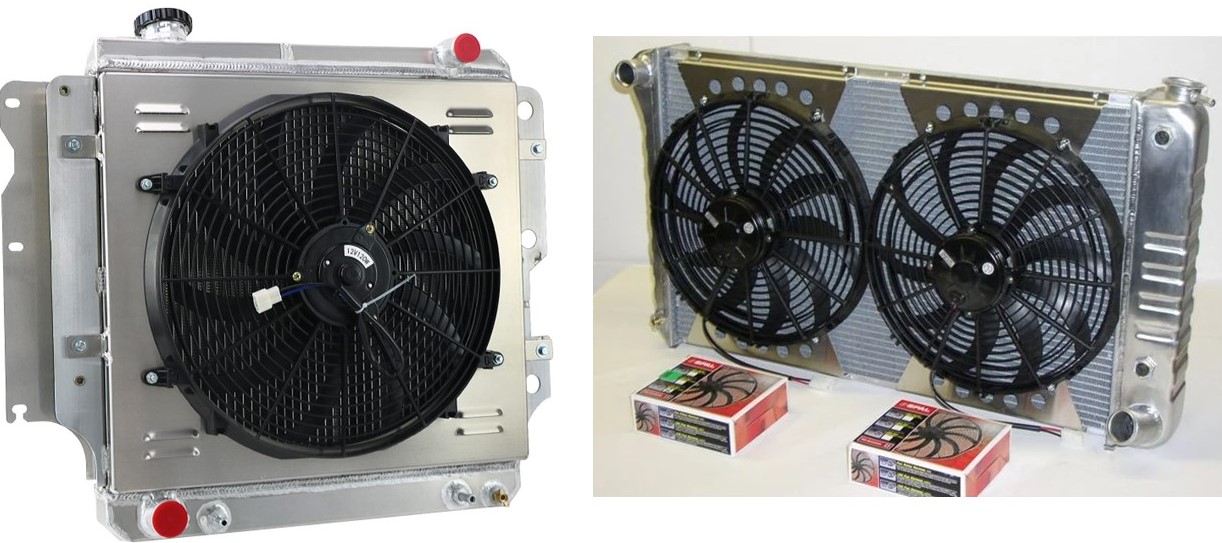
Dual electric fans have numerous advantages over engine driven fans which is why almost all oem vehicles now come with electric fans instead of engine driven mechanical fans, we will cover those advantages a bit later in our top ten list below. When considering an electric fan system one of the first things to consider is pullers versus pushers. For the D2 the obvious answer is pullers because not only are pullers easier to engineer with a shroud system so that they pull airflow across the entire radiator but the D2 already has one pusher fan installed from the factory and several structural supports in front of the radiator that would require removal to install a pusher system. Ideally a puller style electric fan system will incorporate a set of fan shrouds that enclose the radiator surface so that all of the air moved by the electric fan has to come through the radiator and none can come around the radiator or in to the fan inflow vortex without going through the radiator first.
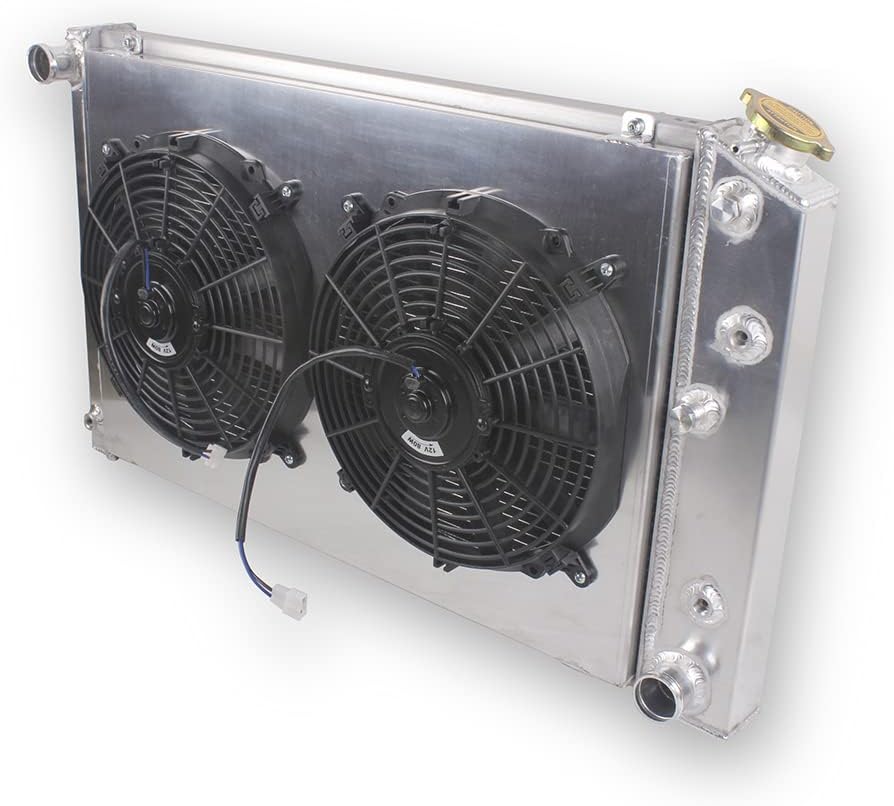 Unfortunately currently no manufacturer currently makes an
aftermarket dual fan system with a shroud designed to fit the D2 radiator
similar to what is commonly done for more popular vehicles like Corvettes, Camaros, Mustangs, etc. So unless you
are going to fabricate your own shroud the installation of an aftermarket dual
electric system will result in sub-optimal airflow through the radiator due to
the fan operation.
Unfortunately currently no manufacturer currently makes an
aftermarket dual fan system with a shroud designed to fit the D2 radiator
similar to what is commonly done for more popular vehicles like Corvettes, Camaros, Mustangs, etc. So unless you
are going to fabricate your own shroud the installation of an aftermarket dual
electric system will result in sub-optimal airflow through the radiator due to
the fan operation.
Several enterprising D2 enthusiasts have retrofitted oem dual electric radiator fans with integrated fan shrouds from various vehicles to the D2, one of the more popular ones from the Land Rover forums being the 2012 Ford Fusion dual electric fan. We decided to test this popular alternative and found the fit of the system to be adequate if not ideal (the shroud is larger than the D2 radiator leaving some significant gaps to be filled by the user if you want to avoid airflow going around the radiator instead of through it). It does provide more airflow than both the factory fan system or the Explorer mechanical fan system, so on that point it would be a preferred alternative to both.
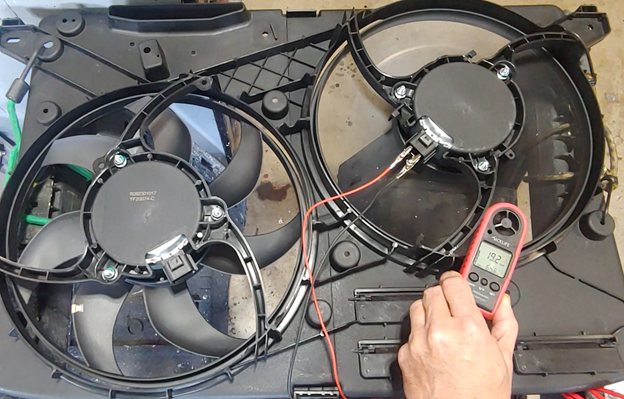
V. Top Ten Benefits of a Dual Electric Fan over an Engine Driven Fan
10. Ability to manually control cooling fan operation - depending on fan controller selected. This manual operation might include manually turning on the fan when extra cooling is needed or manually turning the fans off for example when a water crossing is necessary.
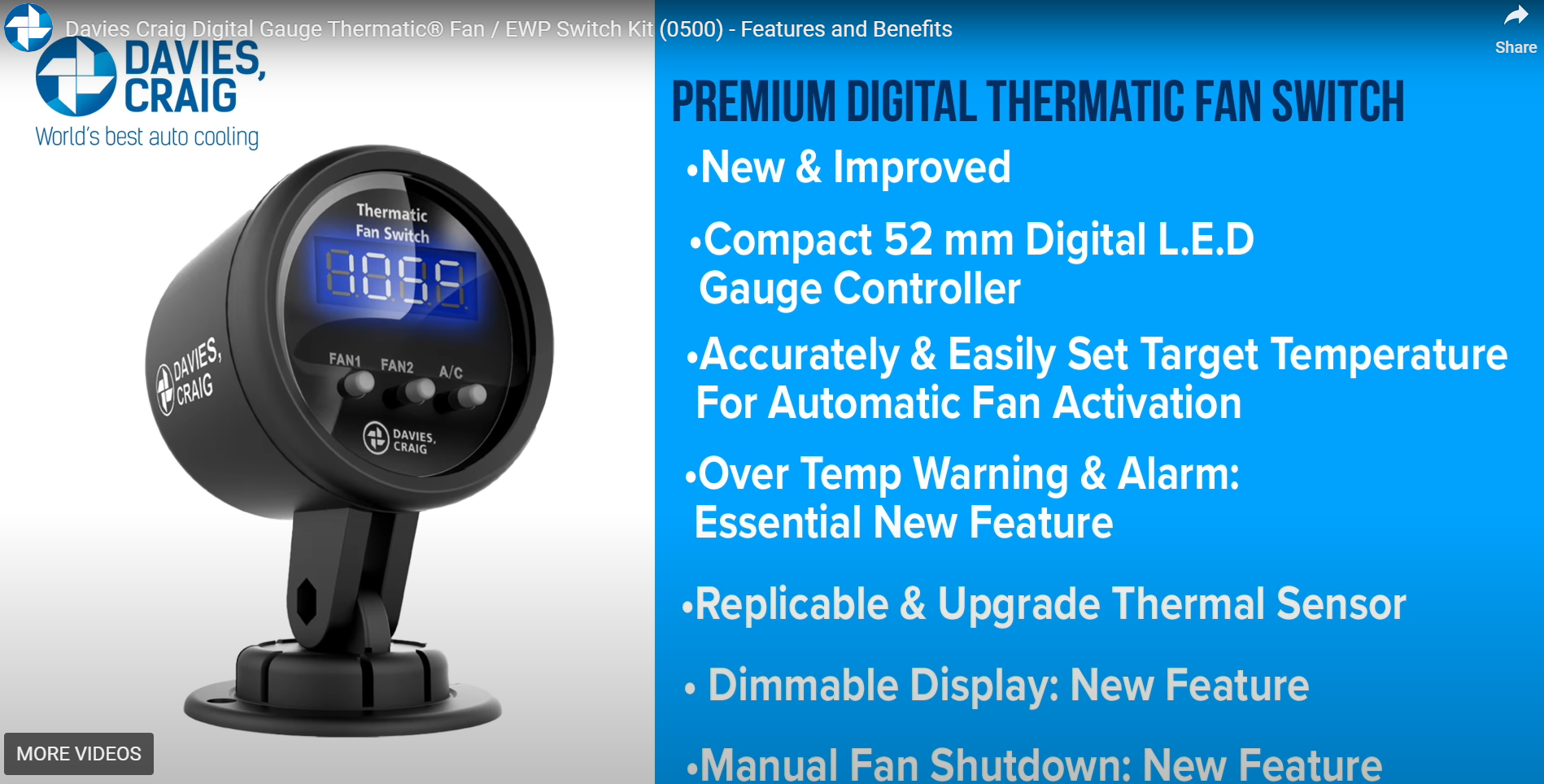
9. Slight increase in horsepower - due to lower rotating mass and elimination of parasitic fan drag. Generally measured to be between 5-10 hp.
8. Improved service access to the front of the engine for servicing accessories

7. Increased air conditioning efficiency during summer months due to increased airflow across the air conditioning condenser.

6. Faster warm up during winter months depending on fan controller selected as there can be virtually no airflow across the radiator until the fan controller has determined the engine temperature is adequate and the airflow is needed.
5. Quieter operation than heavy duty engine drive fan alternatives that provide adequate airflow for stable idle and low speed temperatures
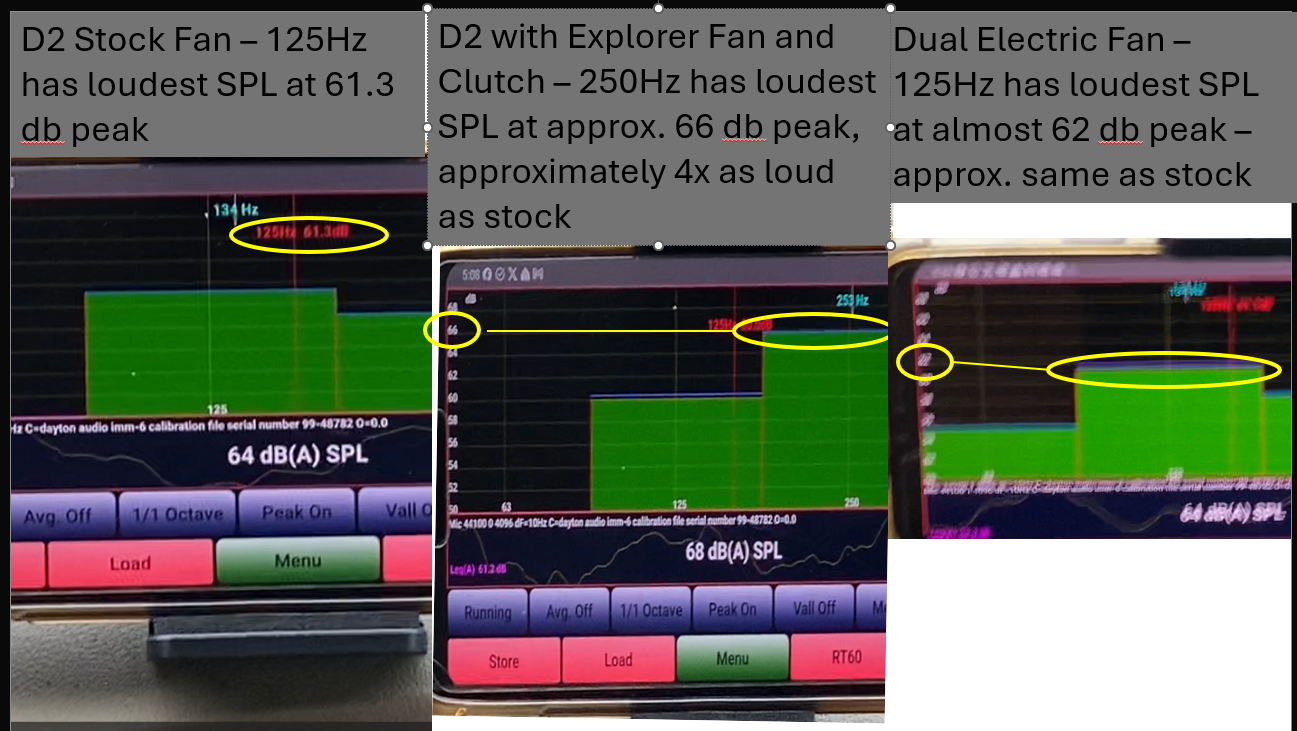
4. Increased fuel economy through elimination of parasitic fan operation when not needed, during warmup and highway operation for example. Our testing has shown approximately 1 mpg fuel economy improvement with the installation of dual electric fans.
3. Eliminates low speed idle temperature creep - It helps alleviate idle and low speed engine temperature problems by providing full speed airflow regardless of engine speed or vehicle speed.

2. Little to zero risk of a fan explosion taking out all of the underhood hoses

1. Increased Airflow - Probably the biggest reason is Increased airflow over the engine driven fan. This is not just due to the higher airflow speed, but also the larger fan surface area. The factory or even the explorer engine driven fan has a diameter of 17 inches for a surface area of 226 sq inches , but the dual electric fans have diameters of 13 inches but there is two of them giving us a surface area of 265 square inches. So if we use our previous measured airflow speeds of 18 mph for the Explorer and you will see in a bit the dual electric kit gives 26 mph, that works out to 2468 cu ft/minute for the engine fan versus 4209 for the dual electrics, 70% more than the engine fan.
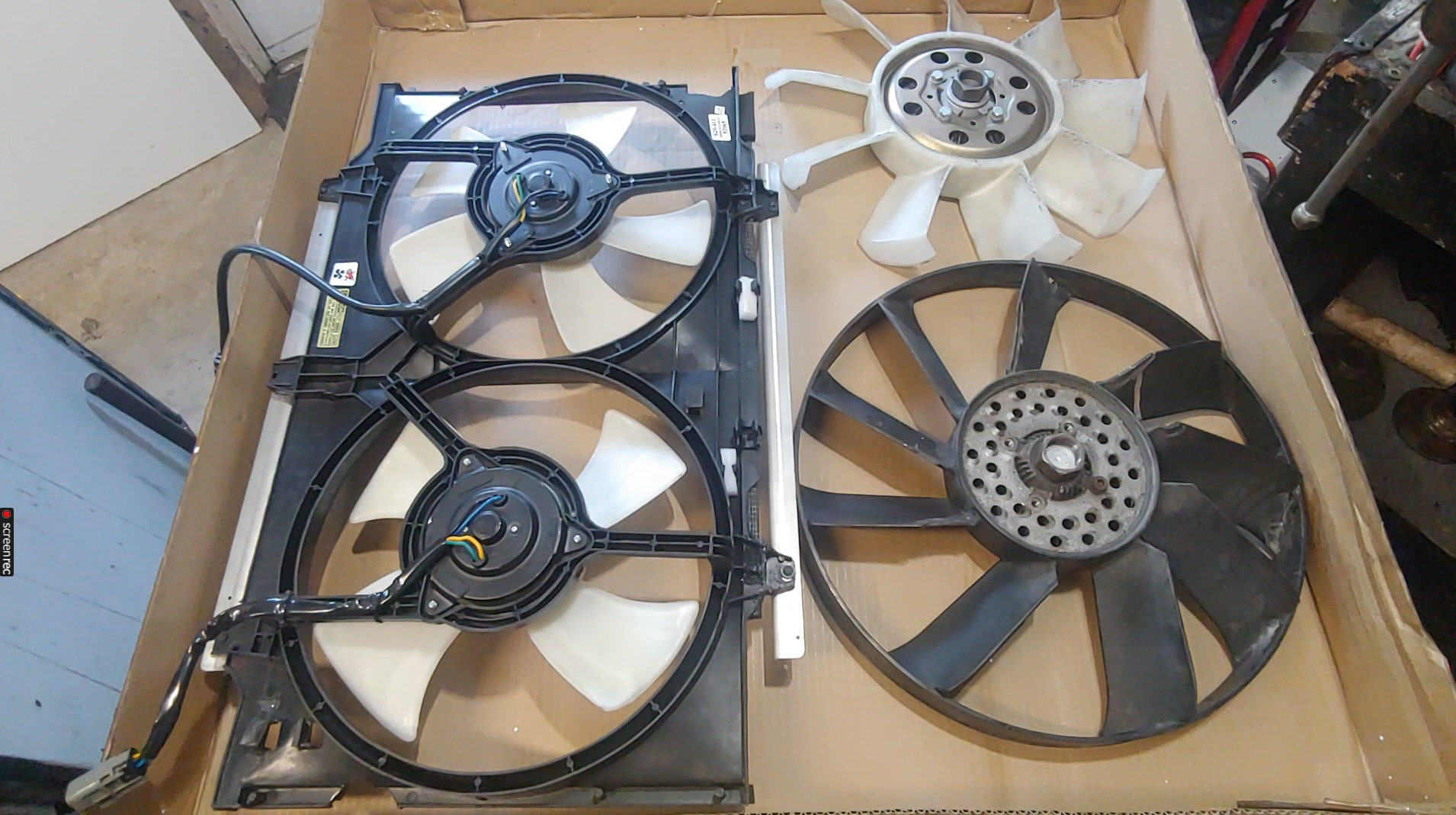
V. Engineering an Extinct Motorsports Dual Electric Fan Kit
So our journey to engineering a dual electric radiator fan kit started when we experienced the dreaded factory fan explosions and collateral damage back in 2014. My 2002 Camaro SS with the 345HP engine ran just great with dual electric fans so I knew immediately there was no way in hell I was putting another engine driven fan on the Disco. I spent a day at the local wrecking yard with a D2 radiator in hand searching for a set of dual electric fans with an integrated fan shroud that would fit very closely to the D2 radiator. As luck would have it the 1989 Nissan Maxima dual electric fan system is a very close match in size to the factory D2 radiator. Surprisingly, the system also incorporates dual speed motors with one of the two dual speed motors being faster than the other. The fan completely eliminated our low speed/idle temperature creep issues, was quieter, and enable the truck to get 17mpg on the highway consistently (stock tire sizes).
After establishing Extinct Motorsports with the objective of sharing the many improvements I had made to my personal fleet of Discos with the broader D2 community, it took a good bit of development work to create a kit that would meet the broader community needs of being plug and play. We went through several iterations of fan mounting brackets before we came to the final version that is both economical and easy to install. Our requirements for the wiring harness were that it not only plug directly in to the factory Maxima connectors but also incorporate an auxiliary fuse panel to provide short circuit protection for the new system. We specified the wire sizing to provide more than enough capacity for full time operation at extreme ambient temperatures and heavy duty termination lugs to withstand the rigors of installation. The fuse panel mounting bracket was designed to tuck in conveniently even with an SAI equipped truck and to provide a mounting location for the necessary relays as well as the fusepanel. All of the wires are enclosed in protective sheathing to provide underhood abrasion resistance and provide a clean underhood appearance. Wirelengths were generously sized to allow connection at factory ground points and directly to the battery for the positive leads.
Our initial installation utilized an older mercury bulb style mechanical fan controller similar to this unit from Flex-a-light.
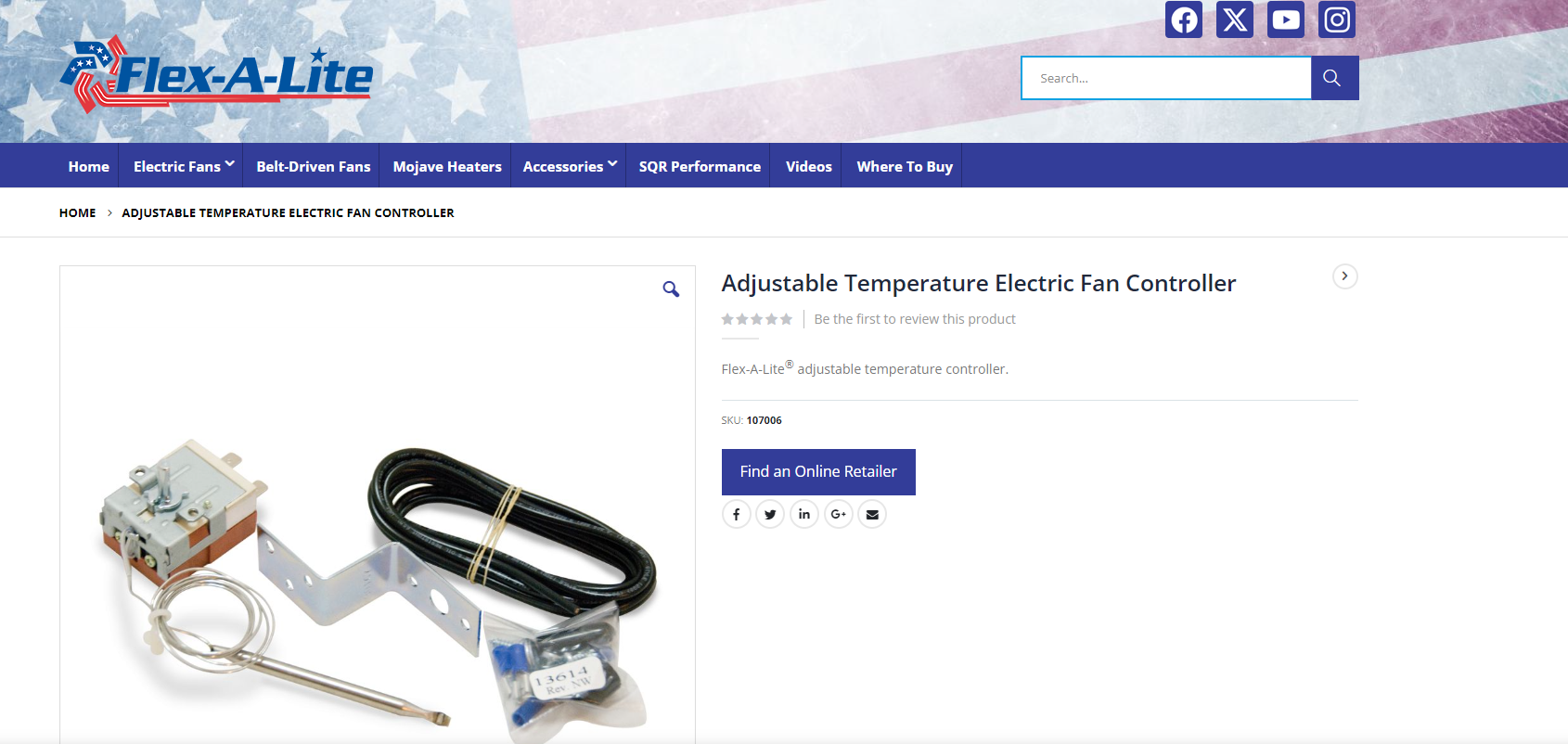
Over time we found that unit had too large of a deadband with too much temperature variation between the temperature it would come on and the temperature it would turn off. The engine was either operating too high before coming on or not turning off when not needed depending on how we adjusted. After some searching we identified an excellent unit from Davies Craig that functions not only as a fully programmable fan controller with independent fan controls, programmable setpoints and alarms, and manual override capability but also functions as our mechanical temperature display on the dashboard.

We decided to engineer a complementary set of custom gauge pods to provide a convenient mounting place for the controller, you can learn more about those here:Adjustable Angle Gauge Pod Product Page
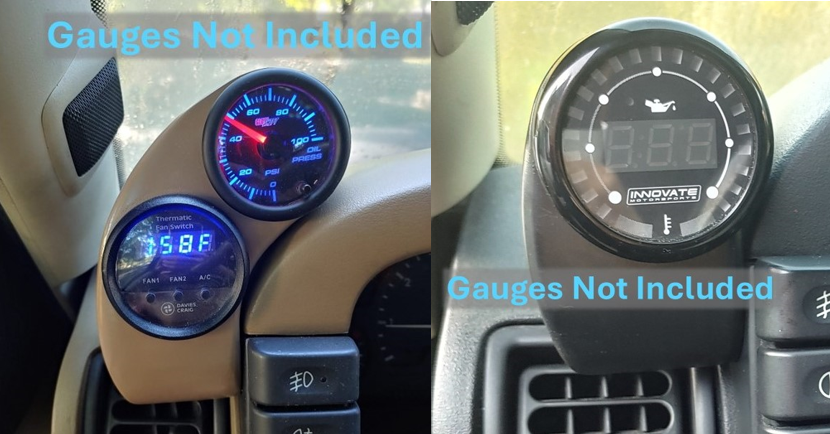
Of course the inline thermostat with the port option provides and ideal place to install the temperature sensor as can be seen in the photo below (We use the sensor that goes with the Davies Craig #0500 fan controller, pn #0465 )
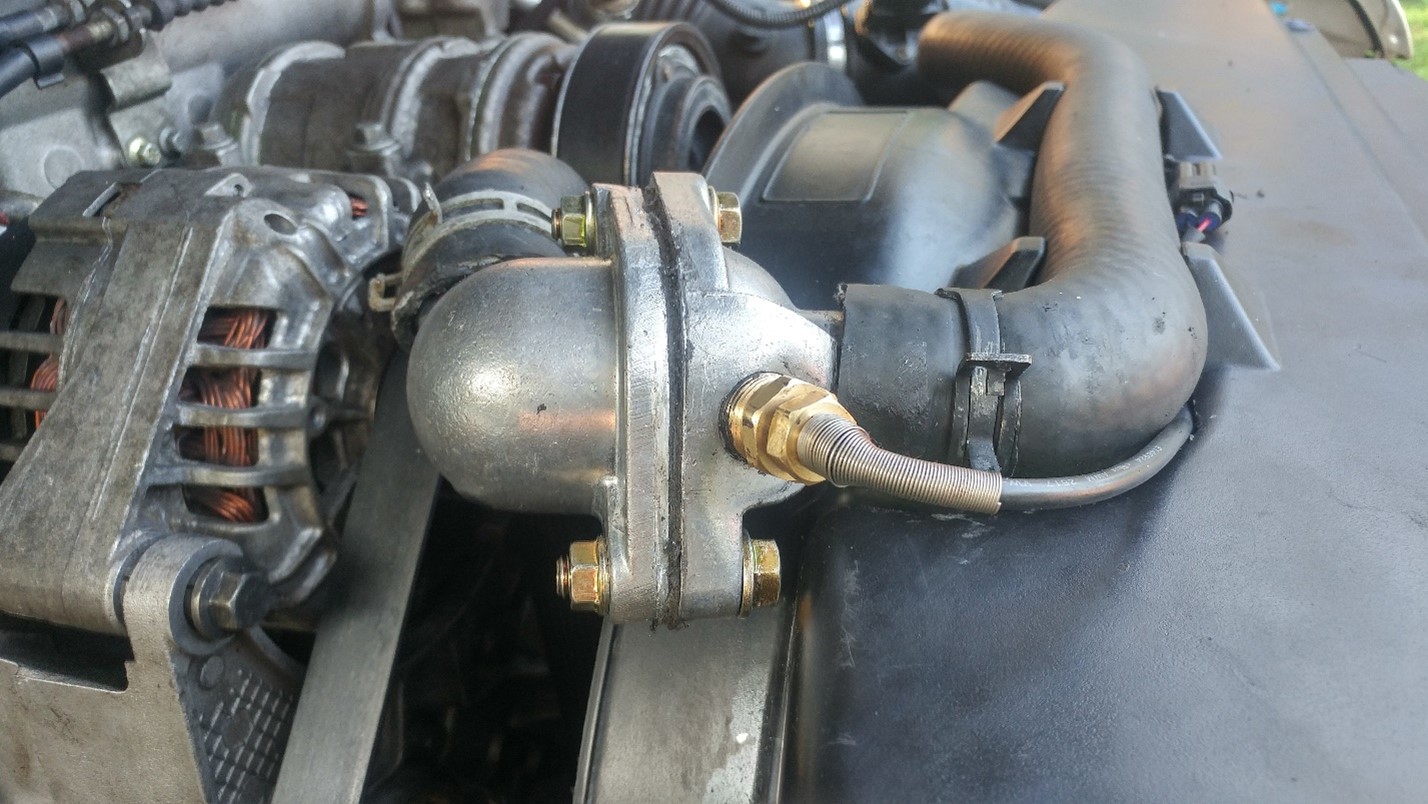
If this discussion has you convinced a dual electric setup is the way for you to go and you want to know where to get the hardware, of course our kit is on our website and can be found from the home page by selecting Shop and then either area and the radiator kit is in the underhood section and the gauge pod for holding the fan controller is in the interior section, or select vehicle and then selecting the D2 and you will find both there. As far as the other components like the radiator fan and the fan controller, I am sure people will ask why they can’t buy those on our website as well. The reason is different for each. For the radiator fan there are lots of retailers selling OEM replacement fans and we could not possibly compete with their prices due to their massive volume, Amazon is likely the lowest cost place to get the correct radiator fan.

As far as the fan controllers, there is such a huge variety of fan controllers we could not possibly stock all of them at a competitive price to say Summit Racing or Amazon. We did contact Davies Craig about stocking their controller but their minimum purchase requirements were larger than our annual sales so again it makes more sense for customers to buy from their favorite retailer.
I hope you have enjoyed this discussion on the use of dual electric fans to upgrade engine cooling on a D2. Of course the concepts and practices discussed here would equally apply to most any vehicle with an engine driven cooling fan. Who knows if there is enough interest perhaps we will engineer kits for D1’s, P38’s, RRC’s, Defenders and who knows what else!
Of course you can see all the videos associated in the video blog here
And if you want to see the installation video that is located here:
And if you want to see the gauge pod installation video that is located here:

